By Dan Weisz
We have butterflies year-round in Tucson but of course they are much more common from Spring through Summer and Fall. The Gulf Fritillary is a very orange butterfly with elongated forewings. There are many different species and subspecies of this group of butterflies and the term “fritillary” comes from the Latin word referring to “checkerboard” patterning on some of them. Gulf Fritillary have those three white dots on the front of their forewing, surrounded by black.
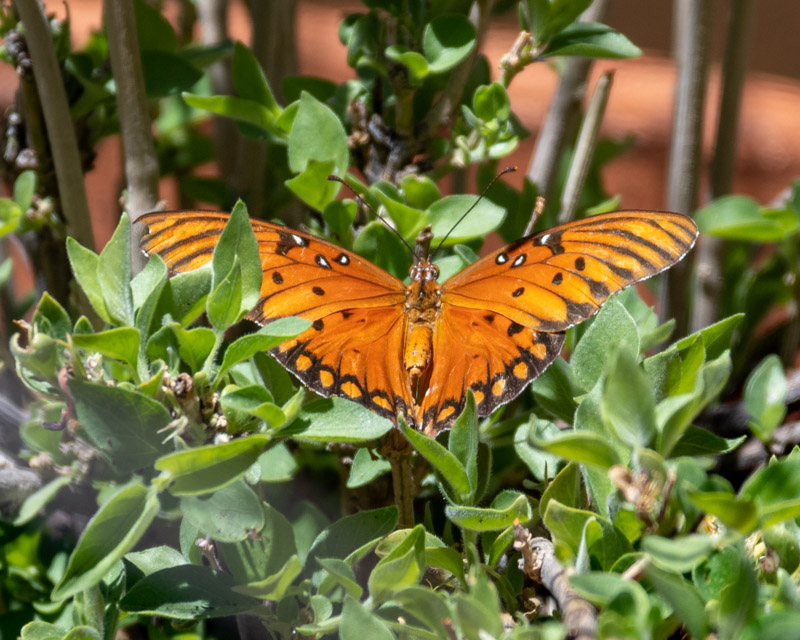
The undersides of their wings feature whiteish/silver spots outlined in black against a brown background.
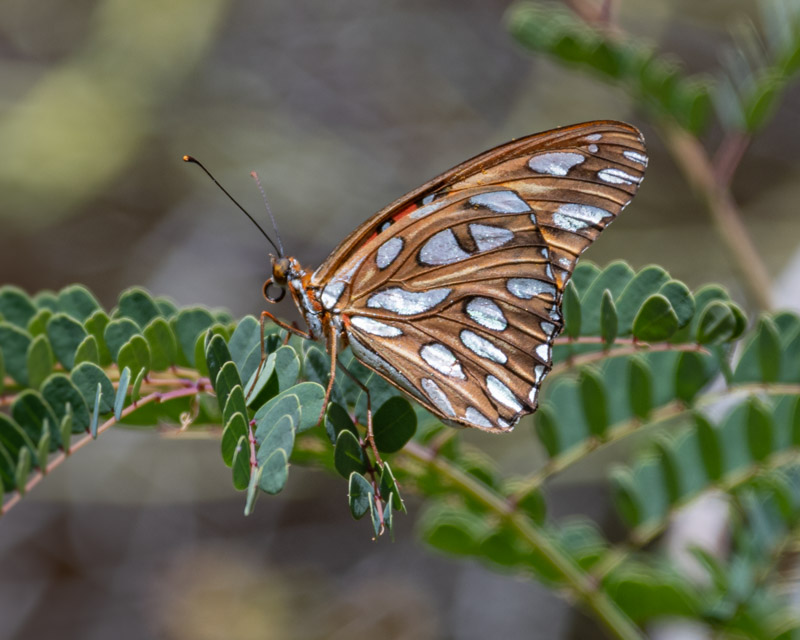
There are many plants that support butterflies but some in particular are more sought after by certain butterfly species. I hadn’t seen many Gulf Fritillary in my yard and, although they use nectar from many flowers including my lantana, I did not have the “host plant” that they prefer. Early last summer I planted a Passion Vine plant in hopes of attracting these brilliant orange butterflies. Various Passion Vine and Passion Flower plants are what are called “host plants” for the Gulf Fritillary. That means that the Gulf Fritillary seek out these plants to lay their eggs on and the caterpillars will live on and consume these plants as they grow. The Passion Flower is spectacular looking, and you can see how green and thick the leaves on the vine are.
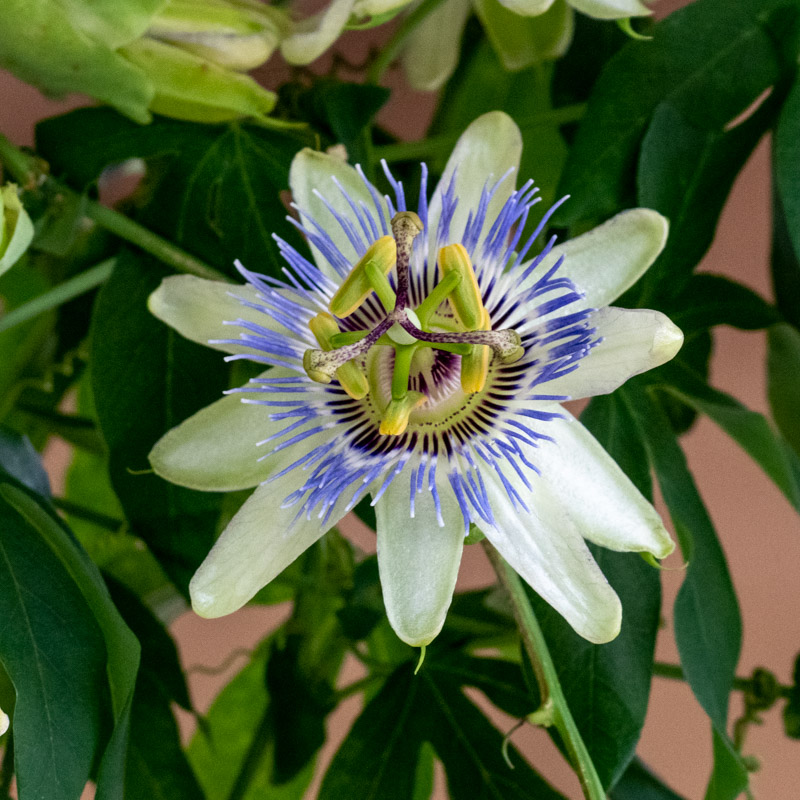
Female Gulf Fritillary butterflies will land on the host plant and deposit eggs, one at a time, on various parts of the Passion Vine.
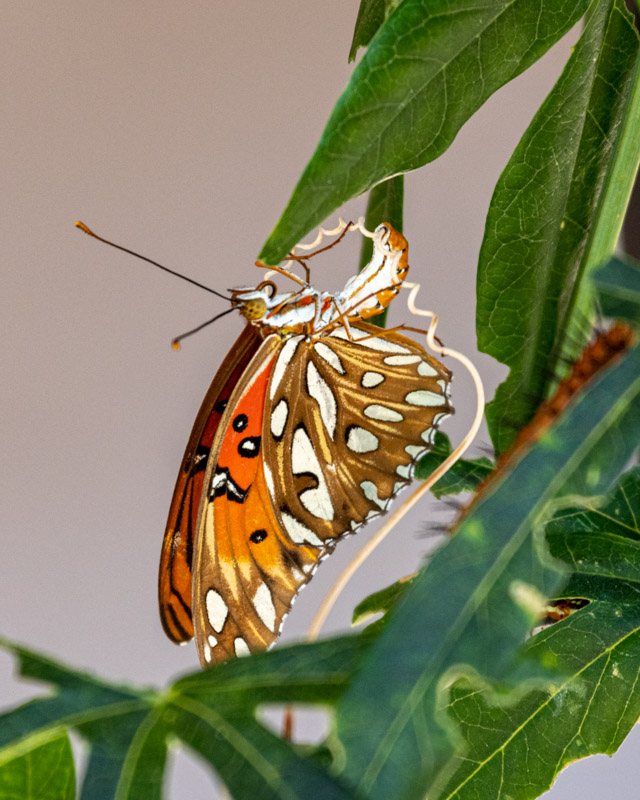
And the eggs, which begin looking yellow, turn more orange as they age before the caterpillar emerges.
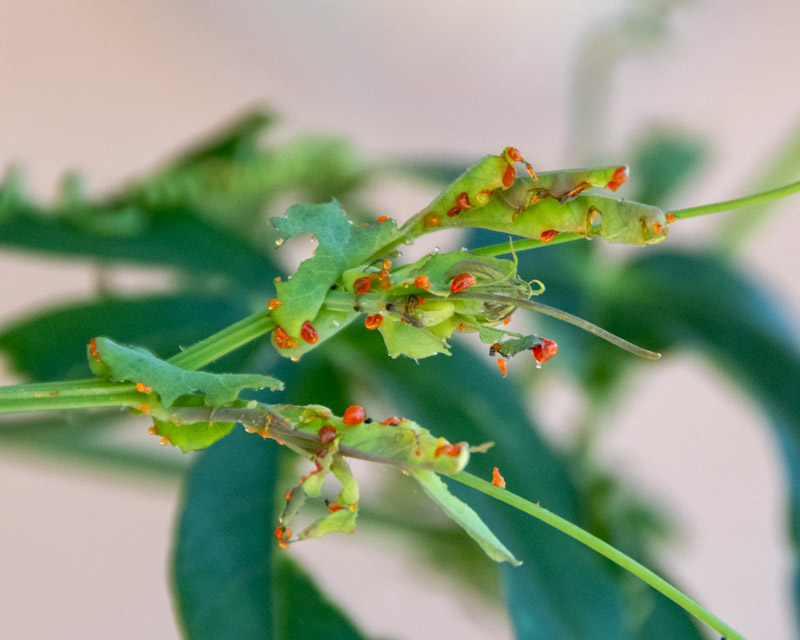
The caterpillars look spectacular. Those black spines look dangerous but they do not sting. However, the orange color is one that is used in nature to warn predators to stay away. Gulf Fritillary caterpillars are not poisonous, but when they sense danger they will emit a strong odor to convince birds and other predators to avoid them.
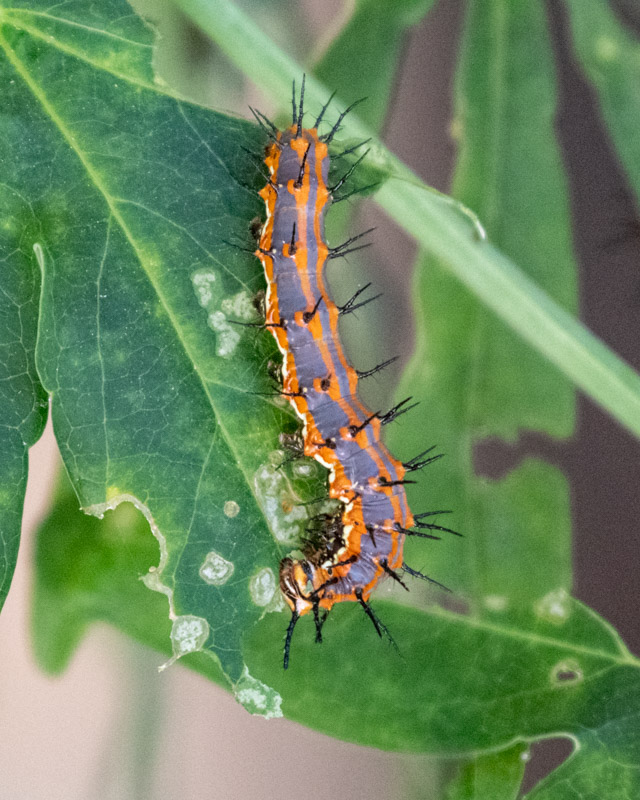
Some of the caterpillars grew to be very long. You can see a few tiny eggs on the now leafless plant if you look for them. Much of the vine has been stripped of its lush foliage.
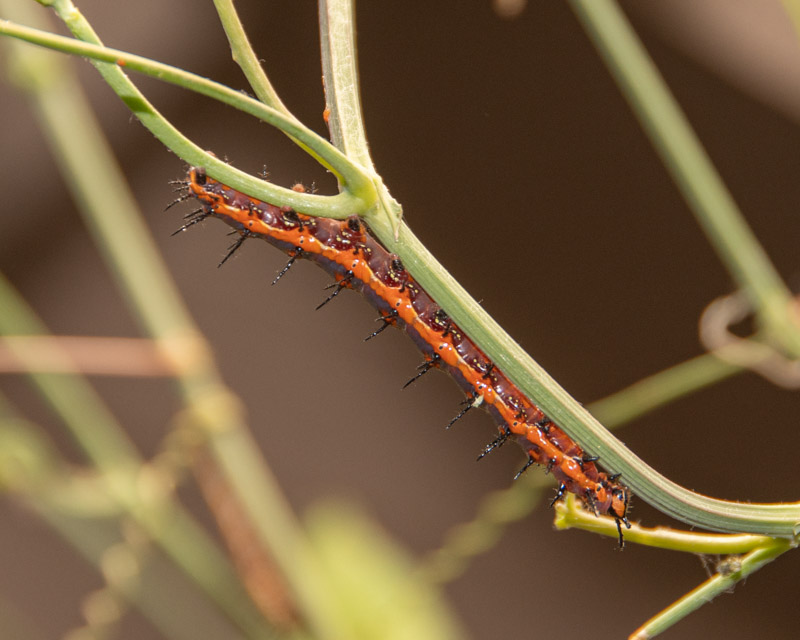
The caterpillars are the larva stage of this insect. In the photo below, the head of the caterpillar is to the right. On the left half you can see the false legs (pseudopods) that are used to support the abdomen of the caterpillar.
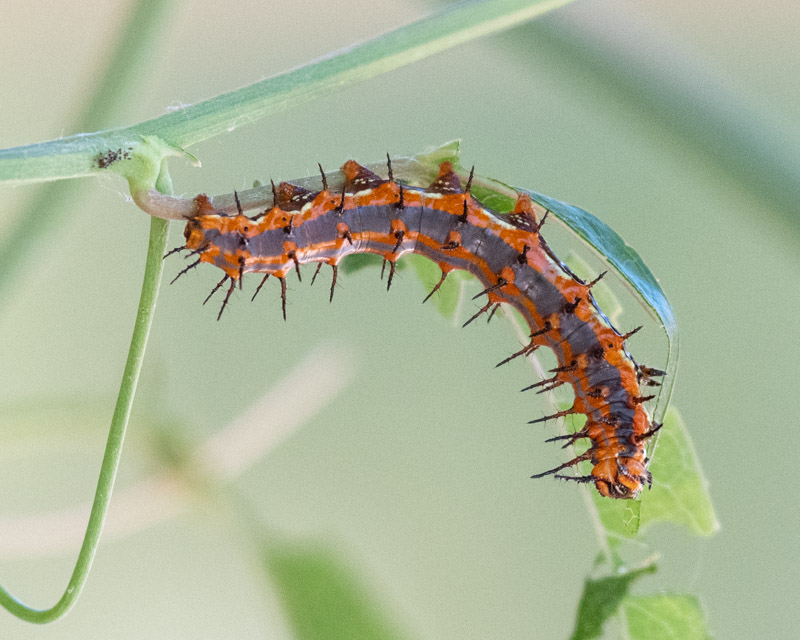
Like all insects, caterpillars and butterflies have six legs. At the bottom of this picture, you can see the tiny black legs of the caterpillar as it grasps the end of the vine.
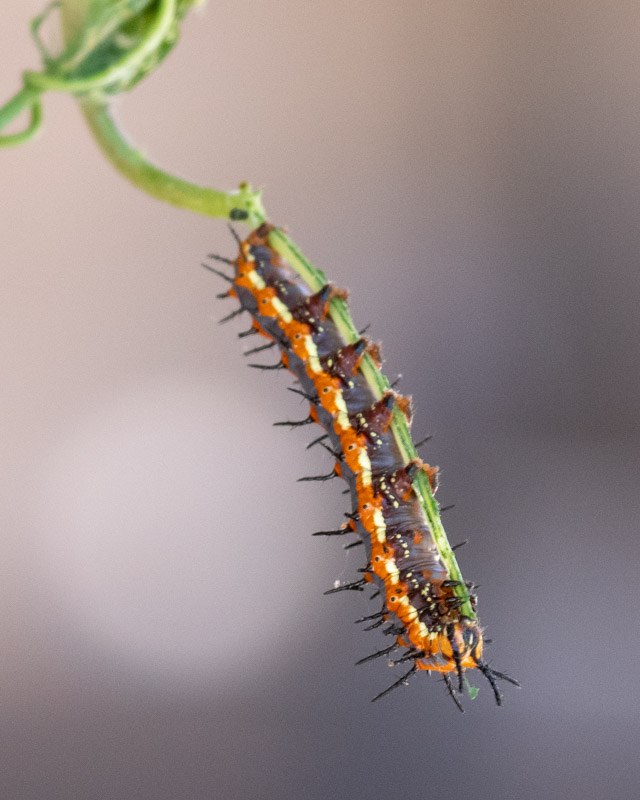
The caterpillar will feast on every part of the plant, including the flower buds.
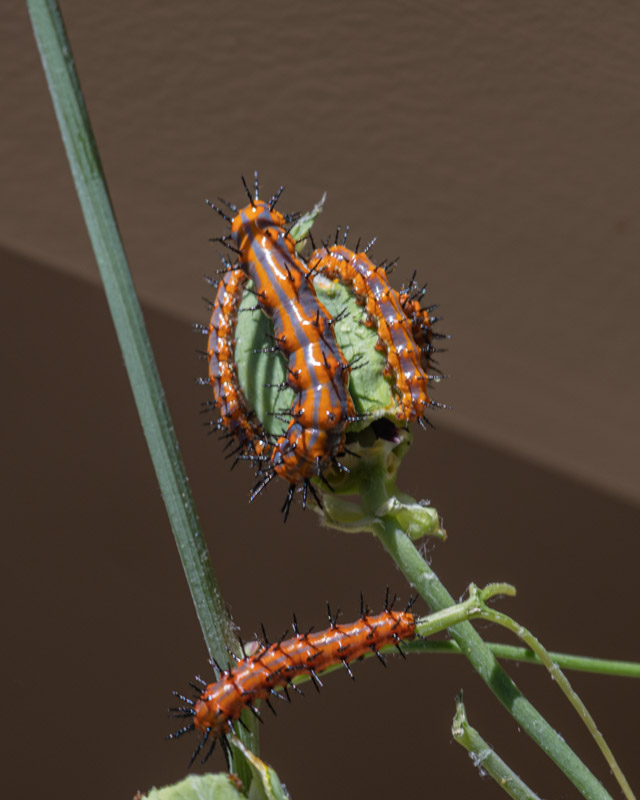
And eventually every single bit of the plant is consumed. If you remember the picture of the Passion Vine flower, you can see hints of it inside this bud, with the remains of light purple and yellow flower parts.
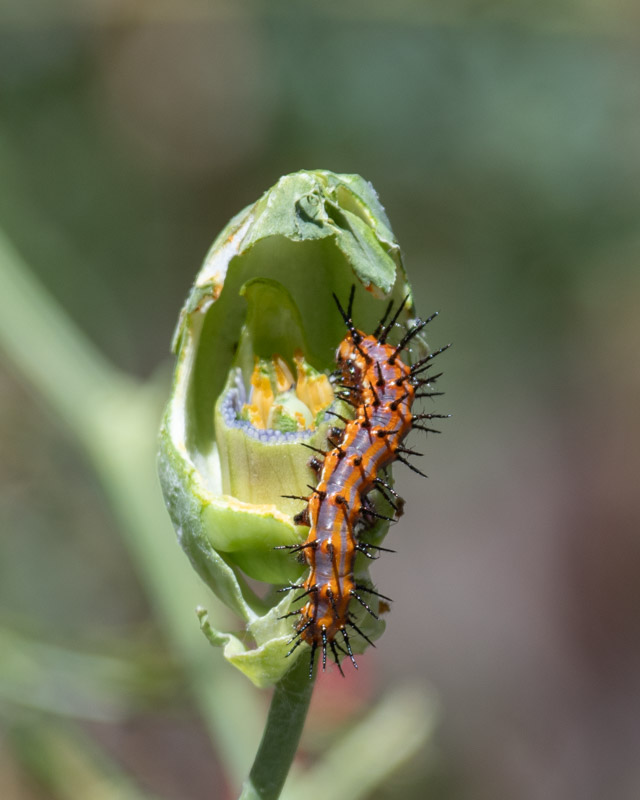
And nibbling until the very end. This caterpillar has run into an egg which is impaled at the end of its body on one of the black spikes.
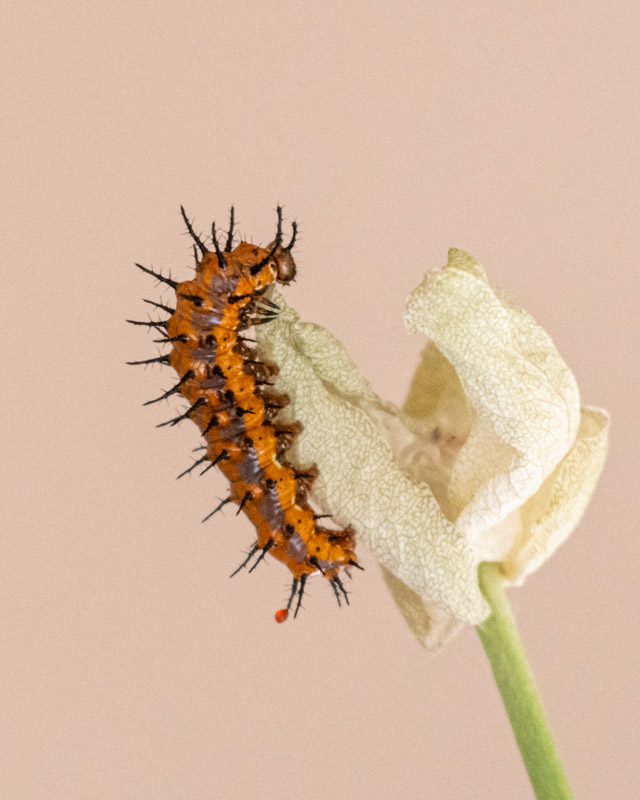
The caterpillars crawled all over the porch, including the sides of the house.
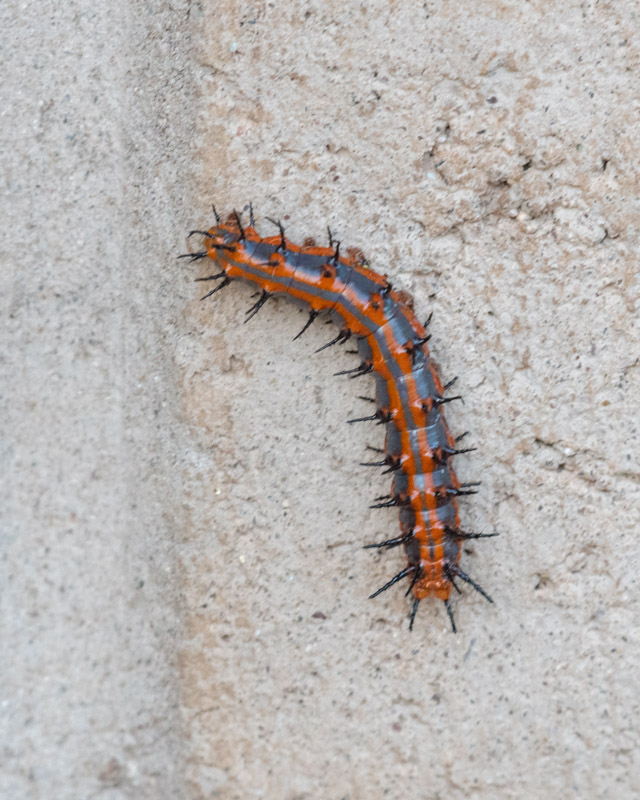
and up on the patio sides.
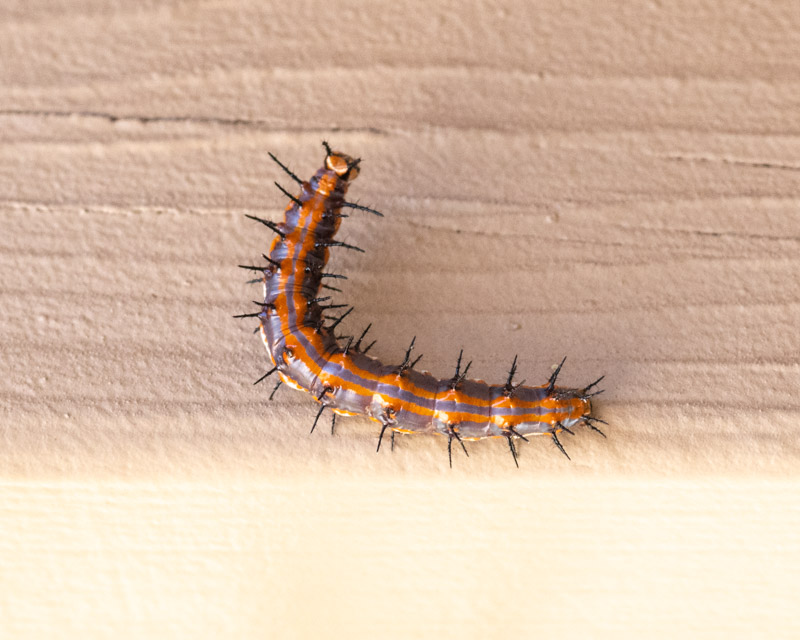
When the caterpillar is ready to move into its next phase, it hangs upside down and assumes a “J” shape. The gray swelling at its head are where the wing buds are beginning to form.
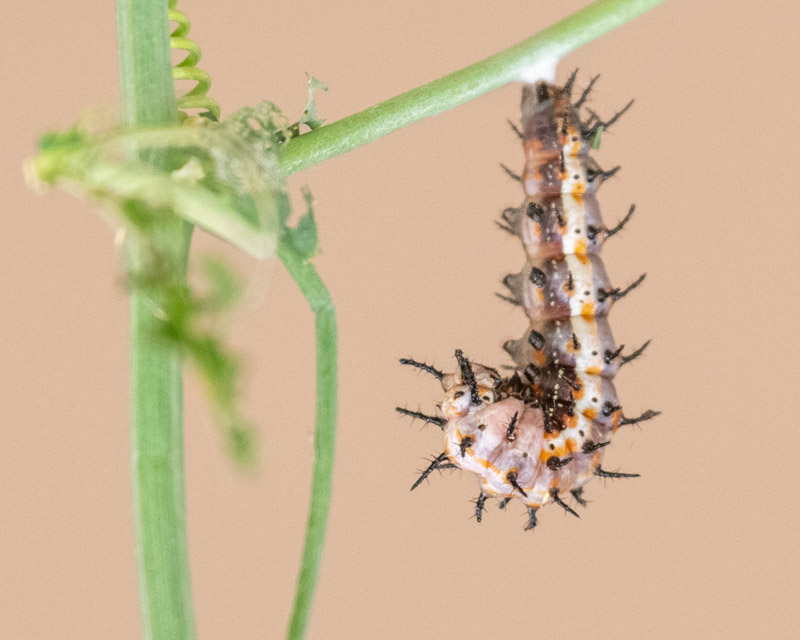
And very quickly the chrysalis is formed. This happens about four weeks after the egg is first laid.
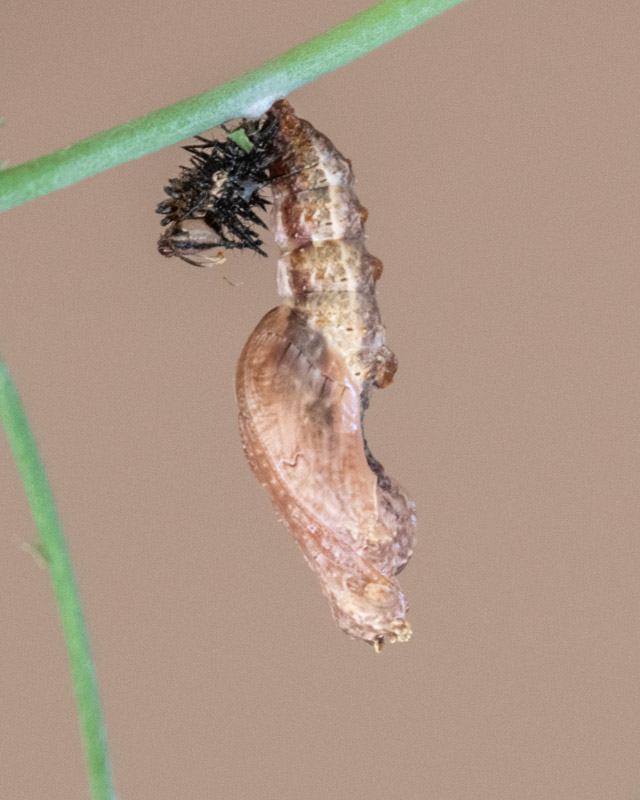
The chrysalis turns darker, almost black, indicating emergence will be very soon.
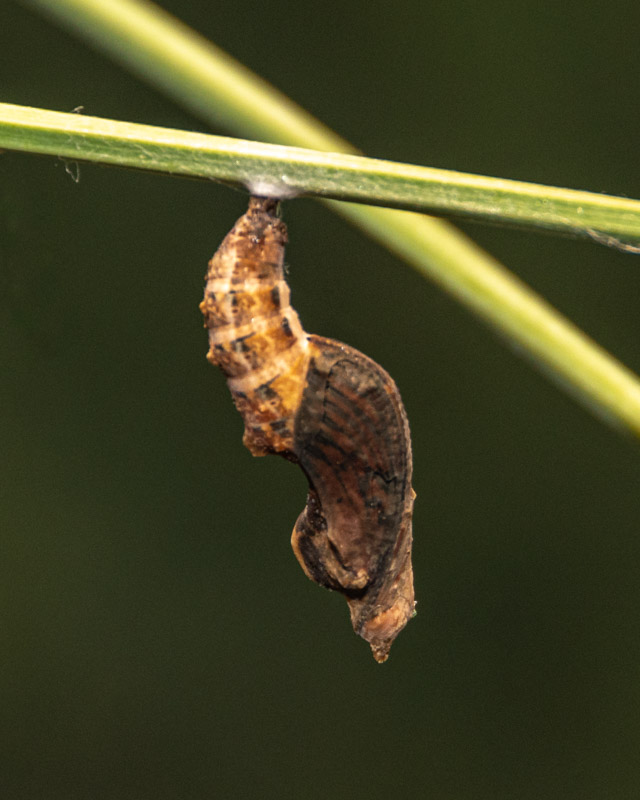
I was unable to catch a butterfly emerging, but I continue to be stunned at how quickly this life process happened. I had a lush green vine on my porch and saw many Gulf Fritillary butterflies flitting about. Around two weeks ago I began to notice a few caterpillars. Within days, the number of caterpillars grew tremendously and, almost before my eyes, they grew while my passion vine slowly disappeared. The vine is still alive and will soon begin to produce new leaves and growth, and then the cycle will begin again.
